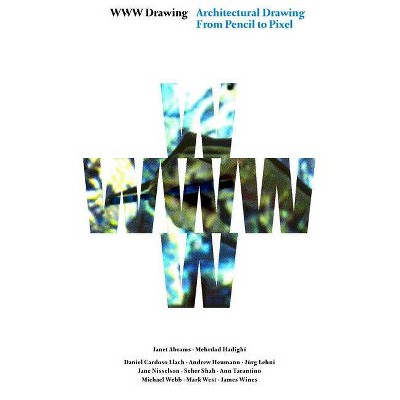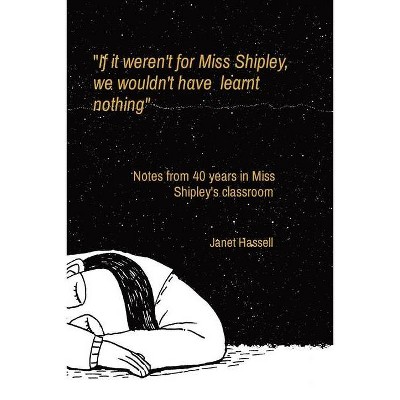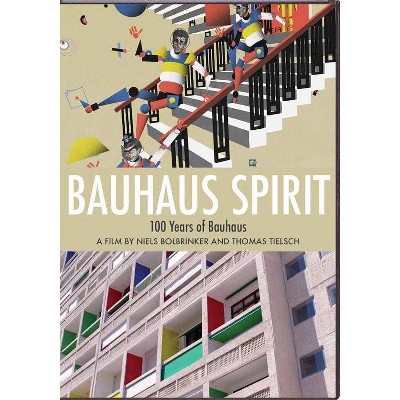Daddy Wouldn't Buy Me a Bauhaus - by Janet Abrams (Paperback)

Similar Products
Products of same category from the store
AllProduct info
<p/><br></br><p><b> About the Book </b></p></br></br>Daddy Wouldn't Buy Me a Bauhaus' collects the unparalleled writings of legendary British wordsmith Janet Abrams for the first time. From pivotal figures in international modernism to the pioneers of digital medium, Abrams explored the ideas, theories, and emotions that fueled their work. The book's twenty-six profiles, written in Abrams's signature, personal, often hilarious style, include Reyner Banham, Berthold Lubetkin, Philip Johnson, Paul Rand, Phyllis Lambert, Frank Gehry, Rem Koolhaas, Muriel Cooper, April Greiman, and Michael Bloomberg. Many of the profiles are back in print for the first time, having originally appeared in Blueprint, I.D. magazine, the Independent, and in books and catalogs from the 1980s through the early 2000s. A foreword by Blueprint's founding editor, Deyan Sudjic, and new reflections by Abrams set the stage.<p/><br></br><p><b> Book Synopsis </b></p></br></br><i>Daddy Wouldn't Buy Me a Bauhaus</i> collects the unparalleled writings of legendary British wordsmith Janet Abrams for the first time. From pivotal figures in international modernism to the pioneers of digital medium, Abrams explored the ideas, theories, and emotions that fueled their work. <p/>The book's twenty-six profiles, written in Abrams's signature, personal, often hilarious style, include Reyner Banham, Berthold Lubetkin, Philip Johnson, Paul Rand, Phyllis Lambert, Frank Gehry, Rem Koolhaas, Muriel Cooper, April Greiman, and Michael Bloomberg. Many of the profiles are back in print for the first time, having originally appeared in Blueprint, I.D. magazine, the Independent, and in books and catalogs from the 1980s through the early 2000s. A foreword by Blueprint's founding editor, Deyan Sudjic, and new reflections by Abrams set the stage.<p/><br></br><p><b> Review Quotes </b></p></br></br><br>"Collected here are 26 narrative essays, all of manageably moderate length, all from 1982-2006. Readers are thus teletransported into an architectural design zeitgeist surrounding the turn of the last millennium: postmodernism rejected, Starchitects rising, and everyone a critic (notably Prince Charles, who memorably labeled a National Gallery addition a monstrous carbuncle). Internationalism flourished, with digital tools making it easier to design in one continent and build on another....Abrams's style is appealingly waggish-one admiring portrait begins with Andree Putman has a habit of losing things...-and largely from a pre-internet time, when tar pits of jargon like built environment were happily less common. In bemoaning how nowadays building designs seem to be determined more by algorithms than inspiration, this retrospective carries a torch of justifiable nostalgia. Long-form, tangy treats for all observers." <br> - Library Journal<br><br>"For the first time, readers can enjoy the collected essays of legendary English writer, editor, and critic, Janet Abrams. Daddy Wouldn't Buy Me a Bauhaus brings together 26 profiles of a cast of characters that includes include Reyner Banham, Berthold Lubetkin, Philip Johnson, Paul Rand, Phyllis Lambert, Frank Gehry, Rem Koolhaas, Muriel Cooper, April Greiman, and Michael Bloomberg, written in Abrams's unique and often uproarious prose. The book is an opportunity to catch up with one of the 20th century's great architectural critics as well as many of its best designers." <br> - Metropolis<br><br>"Janet Abrams was writing about designers and architects in the late '80s and early '90s for magazines like Blueprint and i-D - an era in retrospect that feels like the beginning of the design culture we now find ourselves in. This book collects her best profiles, of people like Rem Koolhaas, Frank Gehry, and April Greiman before they became household names. Her profile on Paul Rand, slightly challenging his position in design history, is especially worth a read for graphic designers." <br> - Eye on Design<br><br>Design isn't about buildings, or objects, or typefaces, or software. Design is about people. And no one has looked more incisively at the people who have shaped the design world over the past three decades than Janet Abrams. <br> - Michael Bierut<br><br>"[Abrams's] portraits vividly capture what drove the architects and designers she interviewed. Architects interested in what was happening in the world of architecture in the US and Europe in the late 1980s and early 1990s will find much to like here, but so will people interested in design and media, topics that occupied Abrams as much as architecture in the later articles written for other publications." <br> - A Daily Dose of Architecture Books<br><br>"Daddy Wouldn't Buy Me a Bauhaus leaves one wanting less of the current anodyne reporting of projects and designers, and more reviews of the kind which Janet Abrams' book is made." <br> - Architecture Today (UK)<br><br>"For someone like me who knows less than zero about architecture or design, this collection of profiles made me feel I'd gotten a crash course. Janet Abrams, with a foundation of sharp questions and sharper writing, builds her book with profiles of designers, policy makers and academics, written over a few decades." <br> - Jewish Exponent<br><br>"In Abrams' profiles there are histories of the distant and the immediate past, linking the two- and three-dimensional design fields together, and presenting postmodernism not as a style but a cultural tendency....'Daddy Wouldn't Buy Me a Bauhaus' leaves one wanting less of the current anodyne reporting of projects and designers, and more reviews of the kind which Janet Abrams' book is made." - Architecture Today (UK)<br><br>"The British journalist, critic, and artist brings a personal, often hilarious style to her profiles of pivotal, sometimes truculent figures in design (she likened interviewing Paul Rand to a boxing match). Here, 26 essays are collected from national and international magazines and books from the 1980s through the early 2000s, with subjects including Julie Snow, Rem Koolhaas, and Michael Bloomberg." <br> - AIA New York<br><br>"This droll, insightful survey of key figures in the field is an essential resource for students and professionals, as well as any creative thinkers cogitating on what they might build next." <br> - Publishers Weekly<br><br>Precociously, Janet Abrams found her distinctive-and creatively skeptical-voice in the American and British design worlds in the 1980s. We feel as though we are eavesdropping in medias res on provocative chats with famous and lesser-known actors, from graphic designer Muriel Cooper to starchitects Rem Koolhaas and Peter Eisenman. A fast-paced page-turner that takes us back a few decades to historic moments at once distant from and formative for our own world. <br> - Barry Bergdoll<br><p/><br></br><p><b> About the Author </b></p></br></br>Janet Abrams's career as a writer and editor spans several decades, cities, and disciplines, with a focus on architecture, design, photography, digital media and ceramics. Trained as a journalist in her native London, she became features editor of weekly newspaper Building Design at age twenty-three, before earning her Ph.D. at Princeton University as a Fulbright Scholar just as Blueprint magazine was launched and she became its US correspondent. Back in London in the late 1980s, she wrote for the Independent and on film and visual arts for Sight & Sound and New Statesman & Society. In the early 1990s, she became writer-at-large for I.D. Magazine in New York, where she wrote on new media and contributed to Domus, Frieze, Lotus International, Metropolis, Ottagono, Print, Skyline and the New York Times magazine, as well as exhibition catalogs, monographs, and books. From 2000-2008, as director of the University of Minnesota Design Institute, she launched a publishing program spanning print, broadcasting and digital media. She is co-editor of <i>Else/Where: Mapping-New Cartographies of Networks and Territories</i>.
Price History
Cheapest price in the interval: 14.69 on November 8, 2021
Most expensive price in the interval: 14.69 on December 20, 2021
Price Archive shows prices from various stores, lets you see history and find the cheapest. There is no actual sale on the website. For all support, inquiry and suggestion messagescommunication@pricearchive.us



















